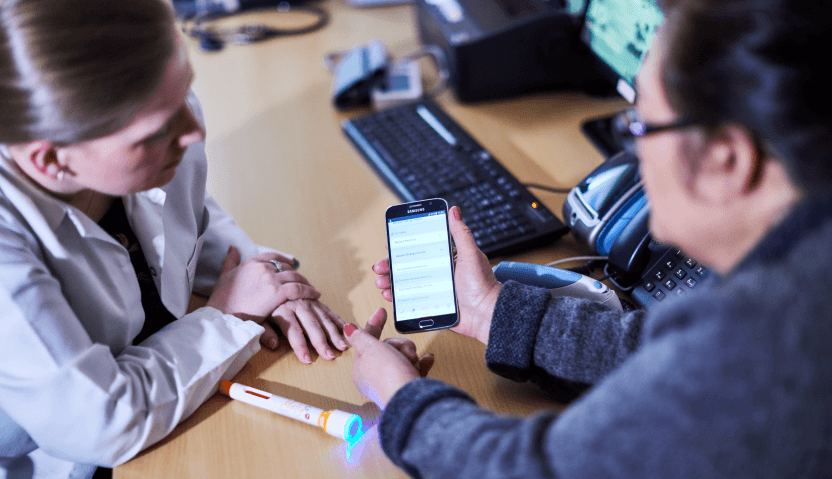Patients’ expectations about engaging with their treatment and care are changing. Not only do patients expect improved healthcare outcomes as part of their treatment, but they also expect an improvement in their quality of life and to be involved in the decision-making around their care. This paradigm shift means patients want to be informed, listened to, understood and adequately supported by their care team in an open and safe manner.
More Technologies Does Not Mean More Engagement or that Patient Expectations are Met!
A new ecosystem of devices, cloud-based and wearable technologies offer the potential to make the management of chronic diseases more efficient and scalable than the current approach involving episodic clinic visits. However, for these technologies to realize their potential they must overcome end-user inertia and create feedback loops with patients that motivate action and sustain engagement to effectively influence patient behavior and outcomes.
You’re Not Competing with Other Pharma or Med Device Vendors
Patients’ expectations are continually evolving based on their experience across industries (see infographic on top trends here). The moment a patient receives a positive experience in any industry, their perception and expectation changes. To sustain engagement and influence behavior, Pharma and Med Device vendors must meet these changing expectations.
Patients are steeped in a world of immediacy, they have become accustomed to accessing the information they want and at the moment they want it. Driven by a world of smartphones, connecting every aspect of patients’ lives, patients are ‘always on’ and always connected. They are able to find the information they need, when they need it or connect to whoever they need any time of day.
Patients’ experiences across industries are driving a demand for:
- Personalized Care: where their needs are understood and support is personalized, not only solve current problems but predict future needs.
- Personalized Care: where their needs are understood and support is personalized, not only are current problems solved, but future needs are predicted.
- Smarter Support for Self-Management: Patients have to manage health outside of a hospital or a clinic. Support needs to be provided around the convenience of the patients rather than the providers, enabling patients to access information and support on their own terms and timeline, wherever they are and in the form most suitable to them. Be it phone, email, apps, peer networks, care workers or remote consultations.
The Key to Meeting Patient Expectations
The key to designing better patient support programs is to recognize that what patients want is to be healthy, not to consume health services.
Through effective use of technology, patient support programs can meet patient expectations by engaging and positively influencing patients’ behavior in their everyday life (read more here), delivered around the convenience of patients rather than providers, offering personalized feedback and support that works with the flow of patient behavior and not against it.
Request the full Exclusive whitepaper “Understanding Patients’ Health Engagement” which includes:
- Defining Patient Health Engagement – and understanding the 6 different concepts that are commonly confused
- The 4 Levels of Patient Health Engagement – how patients move dynamically between each level
- Meeting Patients’ Shifting Expectations
- Patient Stories – How to support patients’ needs in relation to their level of engagement.
Click here to download the first whitepaper of our Digital Behavioral Change Series “Using Digital Behavioral Change Interventions to Improve Therapy Adherence"


